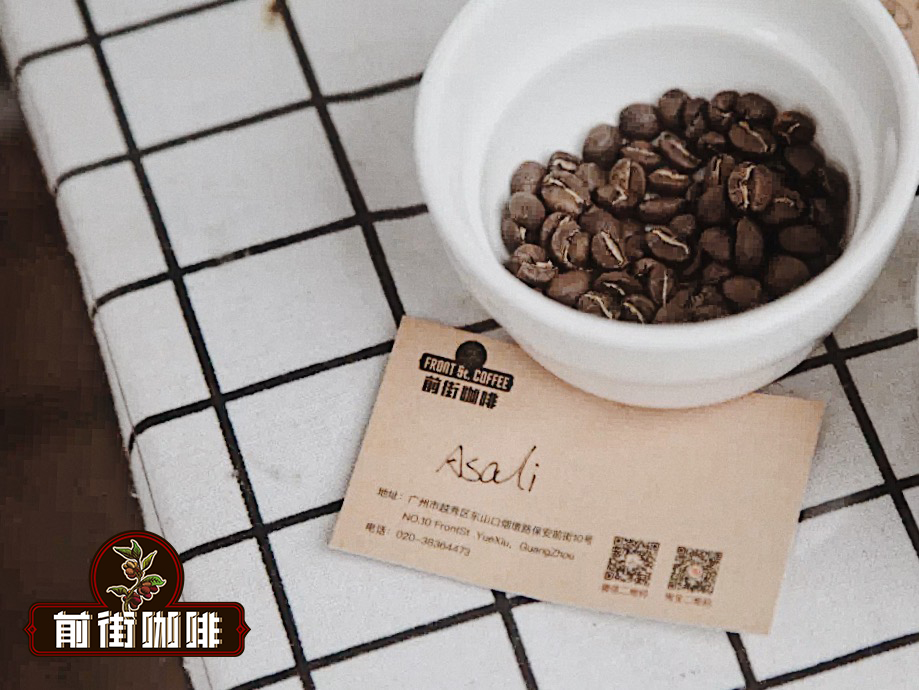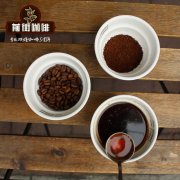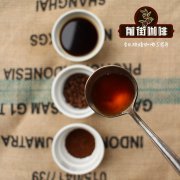The Flavor characteristics of Kenyan Coffee the trading mode of Kenyan coffee
Kenyan coffee has always been loved by many people in the boutique coffee industry, but what's the difference between Kenyan coffee? How do coffee treatments and unique varieties affect the flavor we drink?
Flavor characteristics of Kenyan Coffee
Kenyan coffee is complex and full of fruit flavor, bright acidity, full taste and unique aroma. Many people love it because of its best-known flavor characteristics.
There are many coffee producing areas and coffee varieties in Kenya. In Kenya, the elevation is very high, the rainfall is stable and the soil quality is good. There are several major producing areas, namely: central Kenya (Mount Kenya and Mount Aberdare), west (Kisii, Nyanza and Bungoma), East African Rift Valley (Nakuru and Kericho), east (Machakos, Embu and Meru) and coastal areas (Taita hills). These producing areas all have unique climate and coffee growing conditions, and there are subdivided micro-producing areas, which will lead to subtle differences in coffee flavor.
In addition, Kenya also has a variety of coffee varieties, especially SL28 and SL34, which are rare in other coffee-producing countries. These varieties grown at high altitudes produce complex aromas. In addition, you may have heard of the variety K7, which is planted at a lower altitude and is more drought-tolerant because of its deep roots. In addition, there are two varieties, Batian and R11, both of which are bred in the laboratory to fight coffee-related diseases.
In addition to specific producing areas and varieties, you may have heard of the way Kenyan coffee is graded. AA, AB, PB, C, E, TT may be graded according to bean size, shape and quality. These names have meaning. AA/AB/C stands for coffee beans of different sizes, PB for round beans (that is, a coffee fruit has only one seed), and E for very large coffee beans (like beans). TT stands for low-density coffee beans (poor quality).
Grading coffee beans in this way helps to ensure the consistency of coffee, so that the whole bag of coffee has the same flavor characteristics.

Consistency achieved by teamwork
Kenya has more than 700000 coffee producers who prefer to do it all by hand, from picking, drying, processing to grading, and most farms plant about 1320 coffee trees per hectare.
Kenyan coffee is harvested twice a year, the first between April and June, sometimes in July, and the second from October to December, sometimes in January of the following year. The exact start and end time of the harvest period depends on the producing area, the weather of the year and the elevation of the garden. Because there are two harvests a year, producers will be very busy all year round.
Most full-time coffee growers in Kenya are in the family business. You may have heard the locals call themselves "coffee children". Coffee is their parents, and other producers are their brothers and sisters. Most Kenyan farmers work in cooperatives, which will improve the consistency of coffee quality.
Water washing vs sun treatment method
Careful control of the handling process can further ensure the quality and stability of the coffee. FTOK's 12 cooperatives (located in the central and eastern producing areas) have a fully constructed coffee production system.
Every Tuesday, farmers will ship the coffee fruit to the cooperative, where the pulp will be removed, and then the 72-hour fermentation process will begin, after which the coffee will be dried and the raw beans will be dried, which is processed in batches, so that the final coffee will achieve a more stable flavor.
Washing is very common in Kenya, but you can still see sun-treated coffee in some areas. Generally speaking, Kenyan sun is used for MH and ML grading, preferring lower-quality or unripe coffee.
Sun-tanned coffee in planned production is more expensive than water-washed coffee because properly cared for sun-cured coffee puts farmers at greater risk of failure and requires a lot of time and labor to harvest high-quality sun-cured beans.
The trading mode of Kenyan coffee
Unlike many producing countries in the Americas and Asia, Kenya's local government controls a certain amount of coffee trade, and most coffee beans are bought and sold at central auctions under the supervision of the government-run Kenyan coffee shop.
These are usually farmer-friendly laws, but if farmers want to sell coffee beans independently, it can be a challenge, and farmers may be "excluded" from the supply chain, while the back-end transport and trade administration has to be carried out by both buyers and sellers.
Some producers will think that they do not get a good purchase price in this system, as if they are handling too many roles in the supply chain, and farmers do not fully trust that the back-end people actually express the unique selling point of their coffee to the buyers. it is even suspected that the middleman lied about the actual purchase price.
Kenyan producers have a great enthusiasm for coffee, after all, they claim to be the children of coffee. But the aforementioned low pay and poor management may turn enthusiasm into disappointment.
In recent years, there have been many negative voices about central auctions, which have led the government to restrict direct trade, making it easier for farmers to directly sell and export their coffee. The next challenge is to help farmers get better purchase prices and improve the transparency of the supply chain.
Asari, Asali of Kenya
"Asali" is Kiswahili, meaning "honey". It is named for its full and excellent sweetness. This batch is mixed with AA grade, and is mixed by two different treatment plants with half of each proportion, resulting in an excellent sense of complexity and balance.
■ countries Kenya
■ producing area Sika
■ 1500-1750m above sea level
■ variety sl-28,sl-34
■ processing Plant Asali Bee processing Plant
■ treatment Kenya exquisite 72-hour washing (K72)
The wet flavor of Asali in Qianjie has the aroma of ripe tomatoes and flowers, the sweetness of caramel and yellow sugar when the temperature is high, and the notes of virgin fruit and uric acid emerge after a slight drop in temperature. the acidity is bright, the taste is clean, the terminal sweetness is prominent and there is a sense of juice.

Important Notice :
前街咖啡 FrontStreet Coffee has moved to new addredd:
FrontStreet Coffee Address: 315,Donghua East Road,GuangZhou
Tel:020 38364473
- Prev

How to understand the method of 46 brewing
The World Coffee Brewing Competition is an annual event in which contestants will compete for the title. The game is divided into two rounds. The first round of competitors produced four beverages in mandatory and open services. The person with the highest score will continue to compete in the final, which consists only of open services. The competitor with the highest score won the championship. What does this mean for coffee drinkers like you and me? Organic
- Next

What kind of aids do you need to prepare to make coffee? is it really necessary to have so many wardrobes?
Some people have many different coffee utensils and often make coffee in different ways, but have you ever wondered why so many wardrobes are needed? Wouldn't it be better to keep it simple? Usually people who make their own coffee must have a bean grinder, and there may be more than one, including electric at home and hand grinders for outdoor use. And electronic scales, and cooking utensils.
Related
- Beginners will see the "Coffee pull flower" guide!
- What is the difference between ice blog purified milk and ordinary milk coffee?
- Why is the Philippines the largest producer of crops in Liberia?
- For coffee extraction, should the fine powder be retained?
- How does extracted espresso fill pressed powder? How much strength does it take to press the powder?
- How to make jasmine cold extract coffee? Is the jasmine + latte good?
- Will this little toy really make the coffee taste better? How does Lily Drip affect coffee extraction?
- Will the action of slapping the filter cup also affect coffee extraction?
- What's the difference between powder-to-water ratio and powder-to-liquid ratio?
- What is the Ethiopian local species? What does it have to do with Heirloom native species?

